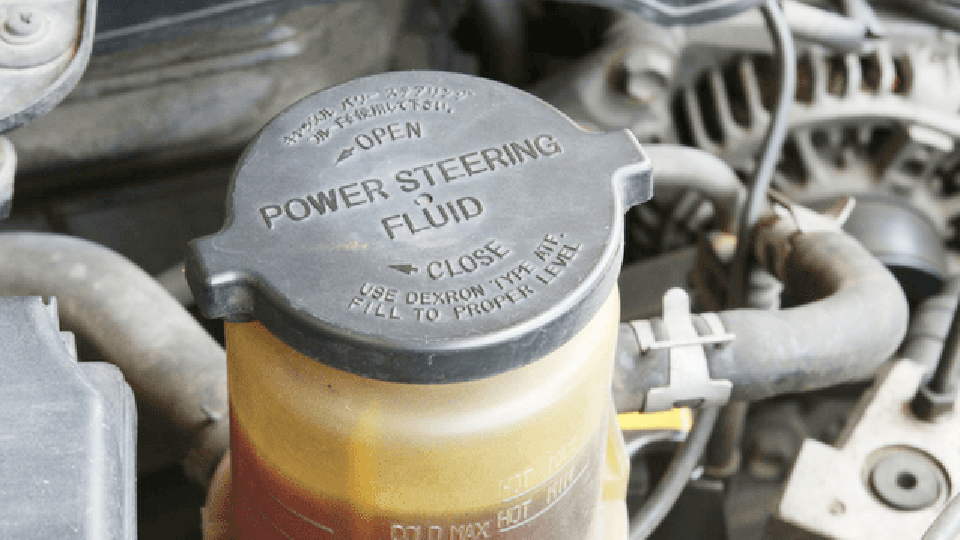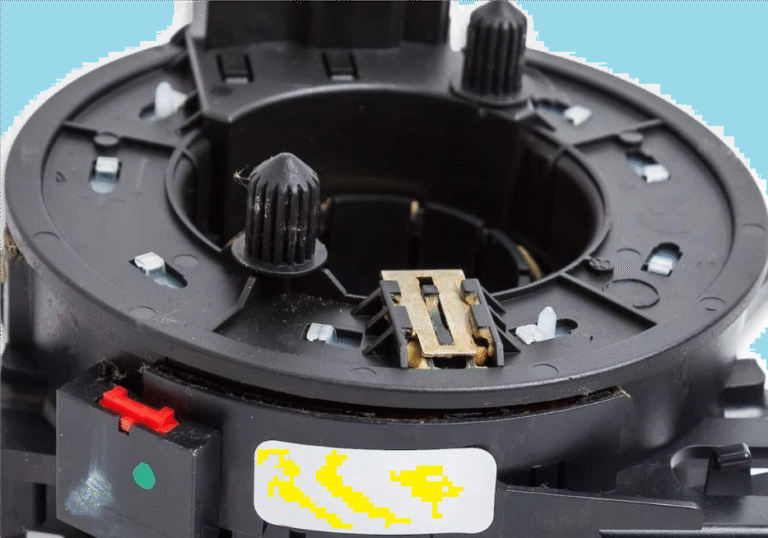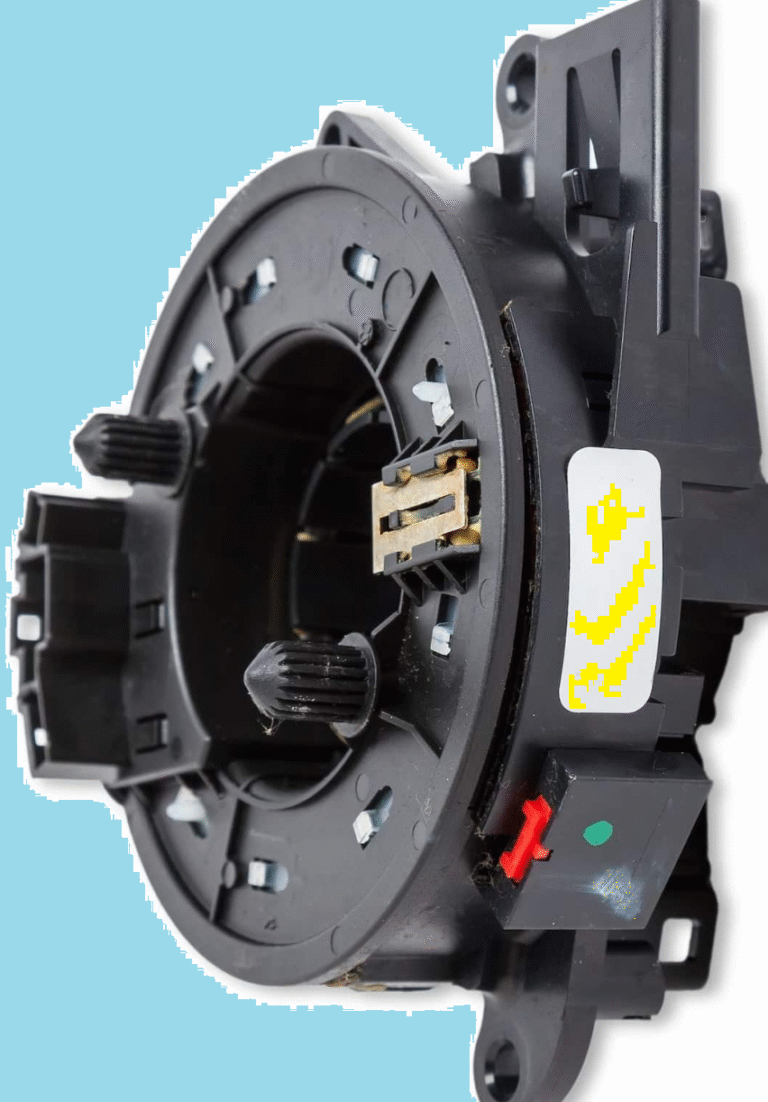If you’ve ever popped the cap on your power steering reservoir and noticed your fluid looking like a frothy cappuccino, you’re probably wondering, “How do I stop power steering fluid from foaming?” I’ve been staring into the reservoir of my old pickup, scratching my head as bubbles churned up like a bad science experiment.
Foaming fluid isn’t just a quirky annoyance—it can make your steering feel heavy, noisy, or downright unresponsive. I’ve tackled this issue on everything from beat-up sedans to finicky sports cars, and I’m here to share what I’ve learned.

Image by goldeagle
What Is Power Steering Fluid Foaming, and Why Does It Matter?
When power steering fluid foams, it’s full of air bubbles that mess with your system’s ability to generate hydraulic pressure. Your power steering pump relies on clean, bubble-free fluid to make turning the wheel feel effortless. If the fluid’s foaming, it’s like trying to drink a milkshake through a straw full of holes—nothing works right.
You might hear whining noises, feel jerky steering, or notice the wheel getting harder to turn. I’ve seen this happen on my buddy’s old Jeep after he ignored a small leak for too long. Left unchecked, foaming can damage your pump or rack, leading to pricey repairs.
Common Causes of Power Steering Fluid Foaming
Foaming doesn’t just happen out of nowhere. In my time wrenching on cars, I’ve narrowed down the usual suspects. Here’s what I’ve found causes that frothy mess in your power steering system.
Air Leaks in the System
Air getting into the power steering system is the number one culprit. It could sneak in through a loose hose clamp, a cracked line, or a worn seal. I once worked on a Honda Civic where a tiny crack in the suction line was sucking in air like a vacuum cleaner.
The fluid was bubbling like crazy, and the steering was stiff. Tightening or replacing the faulty part usually does the trick, but you’ve got to find the leak first.
Low Fluid Levels
If your power steering fluid is low, the pump can start sucking in air instead of fluid, creating foam. I’ve made this mistake myself—neglecting to check the reservoir on my old Ford after a long road trip.
A quick top-off fixed the foaming, but I had to hunt down a slow leak to keep it from happening again. Always check your fluid level before assuming it’s a bigger issue.
Wrong or Contaminated Fluid
Using the wrong power steering fluid is like putting ketchup on a steak—it’s just not right. Different cars need specific fluids, and mixing types or using old, contaminated fluid can cause foaming.
I learned this the hard way when I topped off my neighbor’s BMW with generic fluid, thinking it wouldn’t matter.
Spoiler: it did. The fluid foamed up, and I had to flush the system to fix my mistake.
Worn-Out Power Steering Pump
A failing pump can churn the fluid too much, whipping air into it like a blender. I’ve seen this on high-mileage vehicles, like a ’99 Suburban I worked on that had a pump on its last legs. The bearings were shot, and the fluid was a frothy mess. Replacing the pump was the only fix, but it wasn’t cheap.
Overheating Fluid
Power steering fluid can overheat if you’re pushing the system hard—like towing a trailer or navigating tight parking lots all day. Overheated fluid loses its viscosity and can start to foam. I noticed this on a delivery van I used to drive; the fluid got hot after hours of stop-and-go driving, and the steering started feeling sluggish.
How to Diagnose Power Steering Fluid Foaming
Diagnosing foaming is like solving a puzzle in your garage. Here’s how I approach it, based on years of getting my hands greasy.
Check the Fluid Level and Condition
Pop the hood and take a look at your power steering reservoir. Is the fluid level below the “MIN” line? If it’s low, you’ve likely got a leak somewhere. Even if the level’s fine, check the fluid’s condition.
Is it dark, murky, or full of bubbles? Clean fluid should be clear or slightly amber (depending on the type). I once found a reservoir in a Toyota that looked like chocolate syrup—definitely time for a flush.
Inspect for Leaks
Grab a flashlight and check all the hoses, fittings, and seals in the power steering system. Look for wet spots, drips, or cracks. I like to run my fingers along the hoses to feel for tiny leaks you might not see right away. On one car, I found a loose clamp that was letting air sneak in—just tightening it stopped the foaming.
Listen to the Pump
Start the engine and turn the steering wheel lock-to-lock a few times. If you hear a whining or groaning noise, the pump might be struggling with air or low fluid. I’ve used this trick on countless cars, and it’s a dead giveaway for pump issues or air in the system.
Test the Fluid Type
If you suspect the wrong fluid, check your owner’s manual to confirm what your car needs. Some vehicles, like Hondas, are picky and require specific fluid. If you’ve got a mix of fluids or something generic, you’ll need to flush the system. I’ve made the mistake of assuming all fluids are the same, and trust me, it’s not worth the hassle.
Feel the Steering
Take the car for a short drive. Does the steering feel heavy, jerky, or inconsistent? If it’s worse at low speeds or when turning sharply, foaming is likely the issue. I noticed this on a friend’s SUV after he complained about steering in tight parking spots—turned out to be a combination of low fluid and a small air leak.
How to Stop Power Steering Fluid Foaming
Once you’ve figured out what’s causing the foam, it’s time to fix it. Here’s how I handle each issue, based on what’s worked for me over the years.
Fix Air Leaks
If air’s getting in, you need to seal the system. Tighten any loose clamps or fittings with a screwdriver or wrench. If you spot a cracked hose or a worn seal, replace it. I fixed a leak on my old pickup by swapping out a $10 hose—it took 20 minutes and saved me from a bigger headache.
After repairs, bleed the system by turning the wheel lock-to-lock with the engine running to push out any trapped air.
Top Off or Replace Fluid
If the fluid’s low, top it off with the correct type for your car. Check your owner’s manual or the reservoir cap for specs. If the fluid’s contaminated or foamy, you’ll need to flush the system.
Drain the old fluid from the reservoir, disconnect the return line, and run the engine while adding fresh fluid until it runs clear. I did this on a Dodge that had milky fluid, and it was like giving the steering a new lease on life.
Use the Right Fluid
Always use the fluid recommended by your car’s manufacturer. For example, many Hondas need Honda-specific power steering fluid, while some GMs use ATF. I keep a couple of different fluids in my garage for my various projects, but I always double-check before pouring anything in. If you’ve mixed fluids, flush the system completely to avoid foaming.
Replace a Faulty Pump
If the pump’s worn out, it’s time for a new one. This is a bigger job, but it’s doable with basic tools. Drain the system, remove the old pump, and install the new one, making sure all connections are tight.
I replaced a pump on a Chevy Tahoe in my driveway—it took a couple of hours, but the steering felt brand new afterward. Expect to spend $100–$300 for a quality pump.
Prevent Overheating
To avoid overheating, don’t overwork the system. Avoid holding the steering wheel at full lock for too long, and take it easy if you’re towing or driving in extreme conditions.
If you suspect overheating, let the system cool down before checking the fluid. I’ve added a power steering cooler to a work truck that ran hot, and it made a huge difference.
Costs of Fixing Power Steering Fluid Foaming
Here’s a rough idea of what you might spend to fix foaming, based on my experience with parts and labor. Prices depend on your car and location, but this gives you a starting point.
| Issue | DIY Cost | Shop Cost |
|---|---|---|
| Power Steering Fluid | $10–$30 (per quart) | $50–$100 (flush) |
| Hoses or Fittings | $10–$50 | $100–$300 (labor) |
| Power Steering Pump | $100–$300 | $300–$600 (labor) |
| Power Steering Cooler | $50–$150 | $200–$400 (labor) |
| Seals or Gaskets | $5–$20 | $50–$150 (labor) |
Doing it yourself saves a lot on labor, but you’ll need a decent set of tools and some patience. I always keep a ratchet set, pliers, and a fluid catch pan in my garage for these jobs.
Preventing Power Steering Fluid Foaming
Once you’ve stopped the foaming, you want to keep it that way. Here’s what I do to keep my power steering systems bubble-free.
Check Fluid Regularly
Make it a habit to check your power steering fluid every few months or during oil changes. It takes two minutes to pop the cap and look for low levels or foaming. I caught a slow leak on my wife’s SUV this way before it turned into a bigger problem.
Use the Right Fluid Every Time
Stick to the manufacturer’s recommended fluid, and don’t mix types. I label my fluid bottles clearly to avoid grabbing the wrong one in a rush. If you’re not sure, check the owner’s manual or ask a mechanic.
Inspect Hoses and Connections
Every time you’re under the hood, take a quick look at your power steering hoses and fittings. A loose clamp or a small crack can let air in, so catch it early. I fixed a tiny leak on my neighbor’s car just by tightening a hose clamp with a screwdriver.
Don’t Overwork the System
Avoid cranking the steering wheel to full lock for long periods, especially when the engine’s under load. I learned this driving a delivery van—holding the wheel at the limit for too long made the fluid hot and foamy.
Flush the System Periodically
Even if there’s no foaming, flush your power steering fluid every 50,000 miles or so to keep it fresh. I do this on my cars as part of regular maintenance, and it’s kept the steering smooth and quiet.
Practical Tips and Warnings
Before we wrap up, here are a few tips and warnings from my time in the garage. Always work in a well-ventilated area when handling power steering fluid—it’s messy and can be slippery. Use a catch pan to avoid spills, and wear gloves to keep your hands clean.
If you’re flushing the system, don’t let the reservoir run dry while the engine’s running—it can damage the pump. And if you’re replacing a pump or hoses, double-check that everything’s tight to avoid leaks. I once forgot to torque a fitting properly and ended up with fluid all over my driveway.
If you’re not comfortable with a repair, don’t hesitate to take it to a shop. Power steering systems can be finicky, and a pro can save you time and money in the long run. Finally, always dispose of old fluid properly—most auto parts stores will take it for free.
Keep Your Steering Smooth and Bubble-Free
Dealing with foamy power steering fluid can feel like a hassle, but it’s a problem you can tackle with a little know-how and elbow grease. Whether it’s a pesky air leak, the wrong fluid, or a worn-out pump, you’ve got the tools to diagnose and fix it.
I’ve been covered in fluid, cursing a stubborn hose, but there’s nothing like the feeling of turning the wheel and having it respond like butter.
FAQ
Why is my power steering fluid foaming?
Foaming happens when air gets into the system, often from a leak, low fluid, or a failing pump. It can also be caused by using the wrong fluid or overheating. Check for leaks and ensure you’re using the right fluid to start.
Can I drive with foamy power steering fluid?
It’s not a good idea. Foamy fluid can make steering hard or jerky and might damage your pump or rack. Fix the issue first to avoid bigger repairs down the road.
How do I know if I’m using the right power steering fluid?
Check your owner’s manual or the reservoir cap for the recommended fluid type. Using the wrong fluid can cause foaming and poor performance. If you’re unsure, ask a mechanic or auto parts store.
How often should I flush my power steering fluid?
Flush it every 50,000 miles or if you notice foaming, dark fluid, or steering issues. Regular flushes keep the system clean and prevent problems.
What happens if I ignore foamy power steering fluid?
Ignoring it can lead to pump failure, steering rack damage, or complete loss of power steering. It’s best to address it early to avoid costly repairs.




